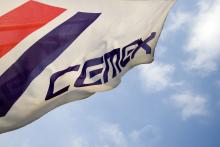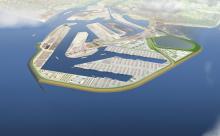
The loader appeared in RAI2’s La Natura che parla (Nature Speaks), which was inspired by the COVID-19 pandemic and highlights particular environmental crises in Italy and the activities underway to address them.
The programme’s presenter Luigi Pelazza travelled from Italy’s alpine glaciers, which are under threat of disappearing, to the mouth of the Sarno river in the south of the country.
Supported by different departments of the Carabinieri and CNR (Italy’s National Research Council) researchers, the eight episodes analysed different ecosystems and how they are being affected by human behaviour. During his journey, Pelazza discussed ecology with well-known figures from Italian culture, such as singer Piero Pelù and the mountaineer and writer Mauro Corona.
The 821G wheeled loader featured in the eighth episode, dedicated solely to the Sarno river. The machine has been at work cleaning the beach in Rovigliano (Torre Annunziata), the mouth of the river.
“The series aimed to highlight the damage our actions can have on the environment, while also showing the efforts people are making to ensure they are not lasting,” commented Pelazza. “CASE’s wheeled loader has been instrumental in one of these operations, helping to efficiently clear a heavily polluted beach and return it to nature.”
Although located near Naples and Pompeii, as well as facing the islands of Capri and Ischia, the beach is unsuitable for swimming and littered with rubbish. During the episode, recorded during the last week of August, the mounds of bottles, containers, reeds and other general waste were collected by the volunteer association “Le meraviglie del Golfo", with as much being recycled as possible.
The 821G was fitted with a three-cubic metre skeleton bucket that was able to filter out the debris from the sand. All the debris collected was then put in a 6m long container, which was only half full once the operation was complete. As a result, the beach’s fine black volcanic sand is once again visible.









